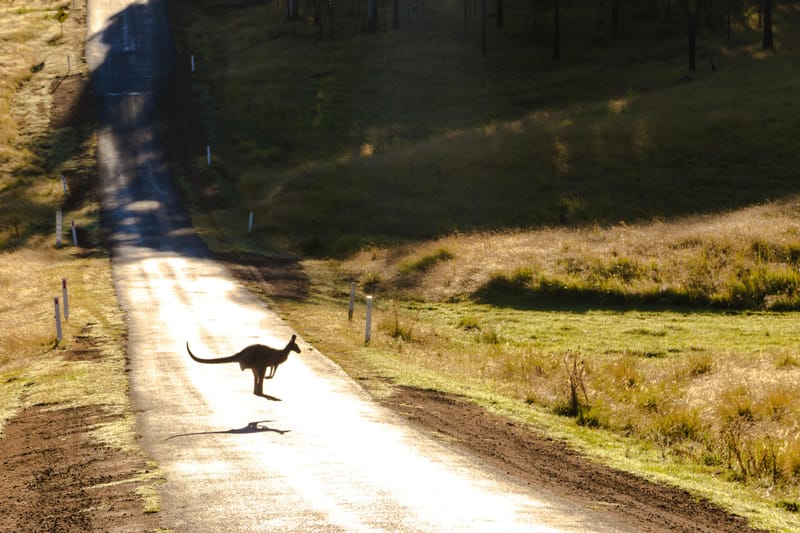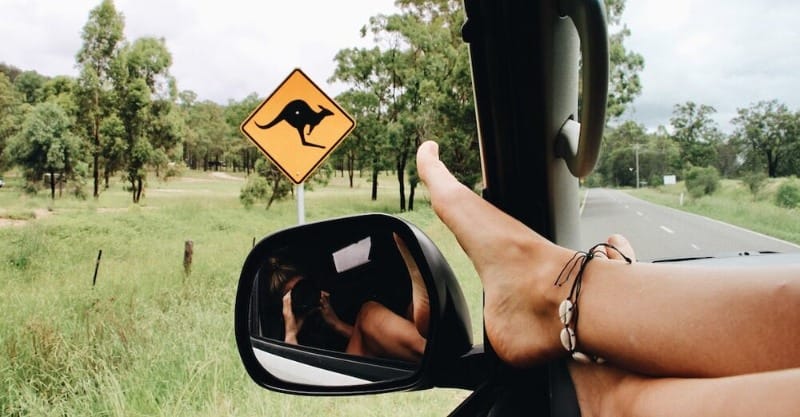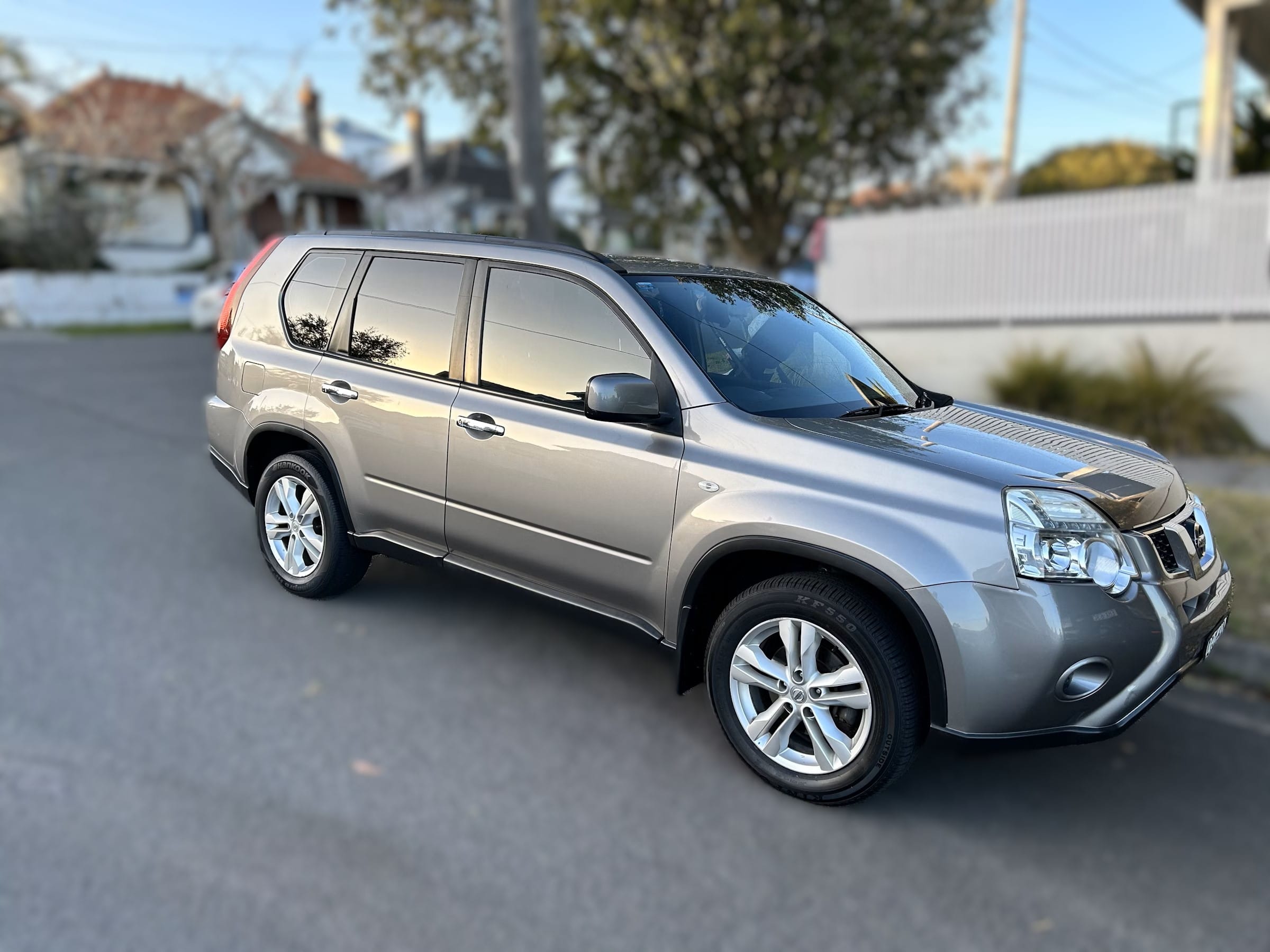Planning an awesome road trip adventure across Australia? Get ready for breathtaking landscapes, coastal vibes, and endless road trips. But it's important to know the road signs before you head out carelessly. We are there to guide you! Let's get right in and see how this Drive mate guide can make you an expert traveler by helping you interpret Aussie traffic signals!

Recognizing Australian Road Signs:
Australian traffic signs adhere to a national standard, which ensures consistency between states, unlike secret code deciphering. But there could be small differences, so it's always a good idea to remain alert. Here's a summary of the three primary categories of indicators you may come across:
Regulatory Signs (Red and White): These are the bosses of the road, dictating the rules you must obey. The speed restriction in kilometers per hour is indicated by a recognizable red circle with a white number (km/h). Recall that going over the speed limit would definitely ruin your vacation mood and result in a sizable fine.
Note: These posted speed limits should not be confused with yellow advisory speed signs, which indicate a reasonable speed for a specific curve or situation.
Additionally, be on the lookout for red circles with white symbols. A red circle with a white bar across it denotes “No Stopping,” while a red circle with a white bar horizontally indicates “No Standing” (no parking at all). Bewildered? Calm down! Most of the time, these signs can be used interchangeably.
Warning Signs (Yellow Diamonds): Your neighborhood's helpful warning signs are these vivid yellow diamonds with black symbols. They alert you to potential dangers that may lie ahead, such as a narrow road (shown by a string of black chevrons), a kangaroo crossing (represented by a black silhouette of a kangaroo), or an area designated for schools (represented by a black silhouette of kids).
Remember, school zones often have flashing lights and a reduced speed limit, especially during peak drop-off and pick-up times. Always slow down and proceed with caution.
Additional yellow diamond signs that are frequently seen are give-way signs (a yellow triangle pointing downward), railroad crossings (a black train symbol), and cautions for intersections (a black cross).
Informative Signs (Various Colors): These signs provide helpful information, like upcoming rest areas (depicted by a black silhouette of a picnic table and chair), tourist attractions (typically featuring a brown background with a white symbol), or designated lanes (indicated by white arrows on a blue background).

Beyond the Basics: A Deep Dive into Aussie Road Signs
Now that you understand the basics, let's go a bit further. Here are a few more indicators you may come across on your Australian adventure:
Give Way vs. Stop: A triangular yellow “Give Way” sign says you must slow down or stop fully only if there is incoming traffic (including pedestrians and cyclists) that has the right of way. In contrast, a red, octagonal “Stop” sign requires you to stop totally and give way to all traffic.
Roundabouts: In Australia, these are typical circular crossroads. Keep in mind that vehicles entering the roundabout must yield to those already traveling through it. Keep an eye out for signs that specify which lane you need to be in order to get to your intended exit.
One-Way Streets: One-way streets are denoted by a blue rectangle with a white arrow. Avoid being the driver who veers off the road and causes havoc!
Bus Lanes: These lanes are reserved for buses only during certain hours and are frequently identified by a diamond with a bus symbol. Check the signage twice to prevent receiving an unwelcome fine.
Pro Tip: It's always advisable to err on the side of caution and slow down if you come across a sign that you're not sure about.

Particular signs to Specific States:
Although the majority of traffic signs follow federal guidelines, some states have their own unique versions. Here are some warning signals you may see based on the path you choose:
New South Wales (NSW): keep an eye out for a particular type of "No U-Turn" sign that has a white horseshoe emblem inside a red circle. Furthermore, be alert for blue signs that identify pedestrian crossings and have white pedestrian emblems on them.
Victoria (VIC): In Victoria, you may come across a special "School Crossing" sign featuring a black silhouette of a schoolhouse and flashing yellow lights. Keep in mind that extra vigilance is required in certain areas, particularly during school hours.
Queensland (QLD): The state has a unique interpretation of traffic flow indicators. Vehicles driving straight through an intersection are required to stay in the left lane. This is indicated by a blue sign with a white downward arrow and the words “Through Traffic, Keep Left.”.
South Australia (SA): The majority of states use the traditional "Give Way" sign, whereas SA uses a red pentagon with a white yield symbol inverted with the same message.
Western Australia (WA): To mark designated turning lanes at intersections, Western Australia uses a distinctive system of lane arrows painted directly on the road. Furthermore, in larger roundabouts with several exits, you may come across “Roundabout Directional Lane” signage that directs you into the appropriate lane for your destination.
Understanding the signs is just one piece of the puzzle. Here are some additional Aussie road rules to keep in mind:
Give Way to the Right: The car on the right has the right-of-way at an uncontrolled intersection (one without traffic signals or signage). Drive carefully, and be ready to stop if an automobile approaches from your right.
Hook Turn: The car on the right has the right-of-way at an uncontrolled intersection (one without traffic signals or signage). Drive carefully and be ready to stop if an automobile approaches from your right.
To avoid obstructing traffic, the hook turn, which is frequently used in large cities, entails turning right from the leftmost lane. It is always advisable to examine road markings and signage twice before attempting a hook-turn.

Observing Traffic Laws: Coexisting on the Australian Highway
You'll not only guarantee a safe and pleasurable road trip but also show respect for other Australian drivers by adhering to these rules and being familiar with the traffic signs. Recall that sharing the road requires collaboration and civility.
Driving Etiquette in Australia: A Quick Guide to Australian Courtesy
Gaining confidence in your outback adventure is enhanced by knowing Australian driving etiquette, in addition to being aware of the signs and regulations. The following unwritten guidelines should be remembered:
Utilize Your Indicators: Before changing lanes or making a turn, always give enough warning. This small gesture makes it easier for other drivers to predict your movements and prevent collisions.
Use Your High Beams Wisely: High beams aren't supposed to blind oncoming cars; they're meant for open, dark roadways. When driving in populated areas or when you are approaching another car, lower your headlights.
Keep a Safe Following Distance: In Australia, tailgating is strictly prohibited. To enable safe braking, keep enough distance between your automobile and the one in front of you.
Watch Out for Wildlife: Australia is home to a wide variety of wildlife. Watch out for wombats, koalas, and kangaroos, particularly on country roads and at dawn and twilight. When in an area designated with a wildlife warning sign, slow down and continue with caution.
Savor the Trip: Australia is home to some of the world's most stunning scenery. Don't travel too quickly! Take your time, enjoy the landscape, and stop at approved rest stops so you can stretch your legs and take in the surroundings.

The Drive mate Advantage: Your Travel Companion for Australia
Drive mate goes above and beyond in the rental car business to make sure you have everything you need for a hassle-free trip around Australia.
Here's how we can support you:
Large Selection of Vehicles: Pick from our large fleet of vehicles, which includes tough 4WDs for navigating rough terrain and fuel-efficient hatchbacks for exploring cities.
Fair and Open Pricing: We support up-front costs without any additional costs. You will receive the finest value for your money thanks to our affordable prices, which free up more cash for adventures.
24/7 Customer Support: If you have any questions or require help with anything that may come up while traveling, our helpful customer care team is here to help.
So fasten your seatbelts and get ready for the ultimate road trip journey across Australia! A little preparation, familiarity with traffic signs and regulations, and the ideal vehicle from Drive mate at your side will ensure an amazing trip full of breathtaking scenery, unusual encounters, and unending Aussie charm with Drive mate car rental.
Also read:
Comprehensive Guide for Driving with a Foreign License
Unveiling Australia's Secret: Best Off-the-Beaten-Path Road Trip Destinations


